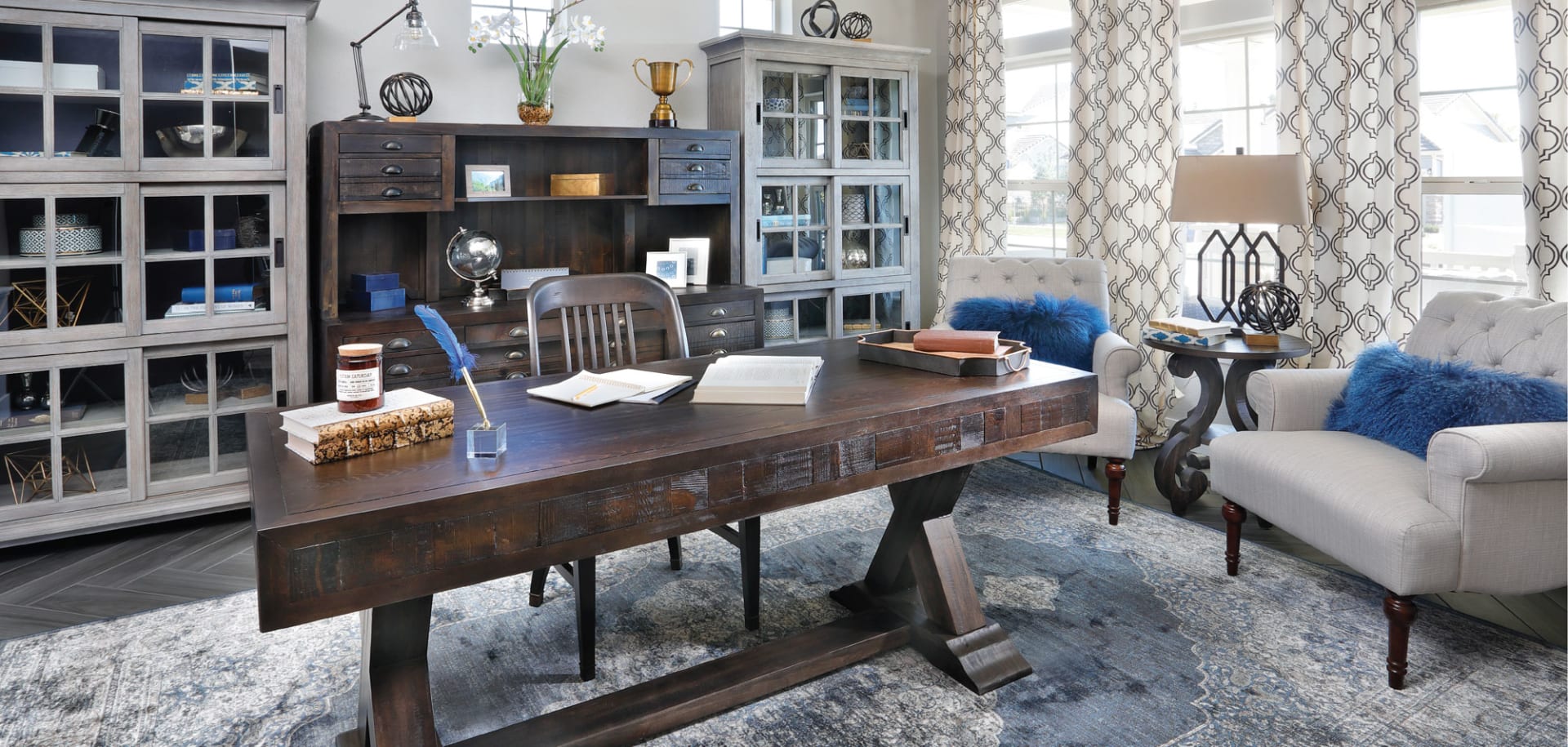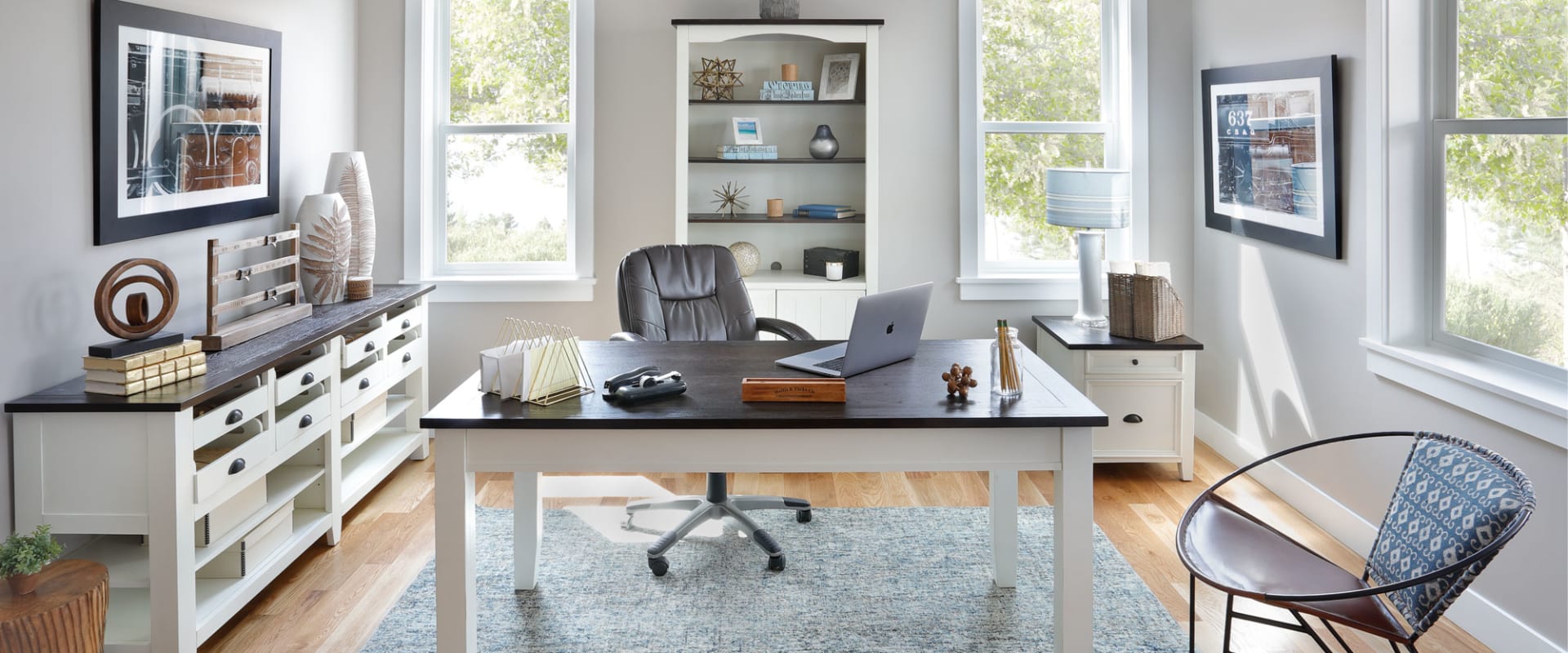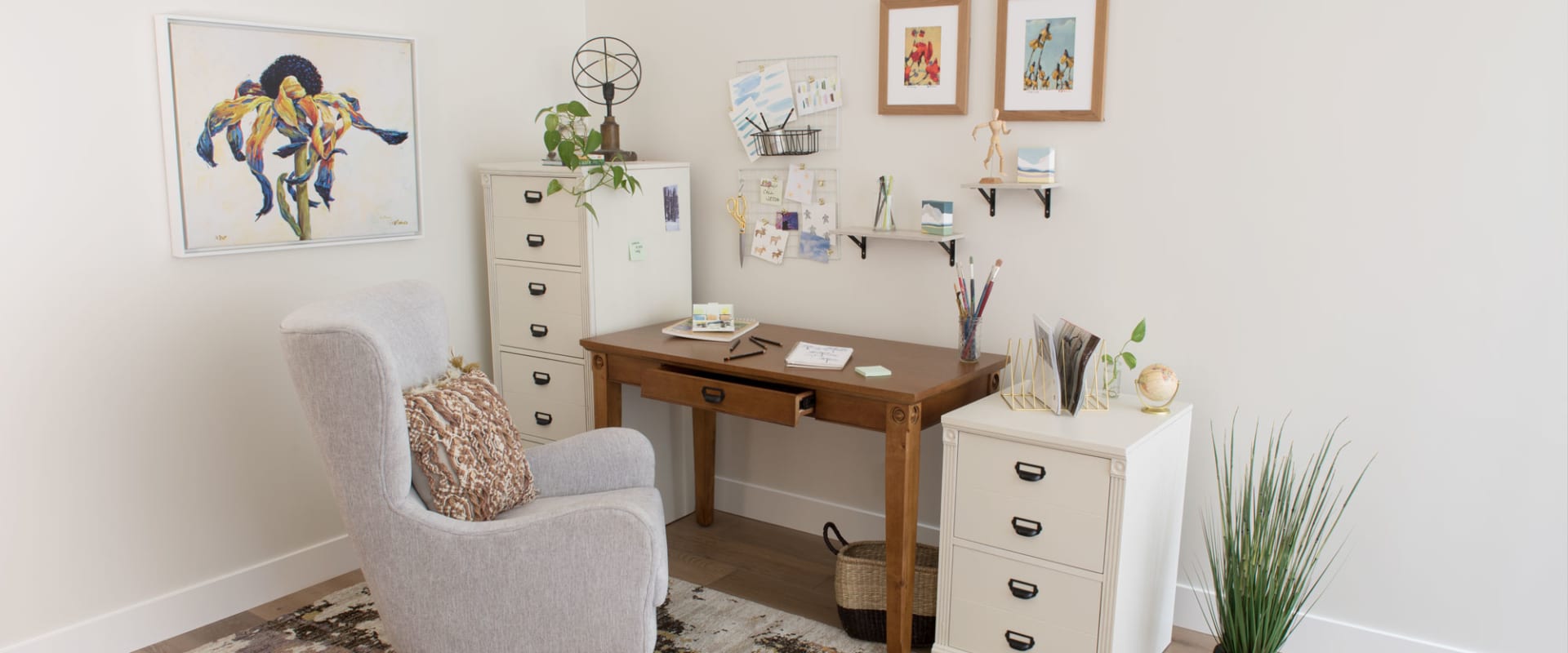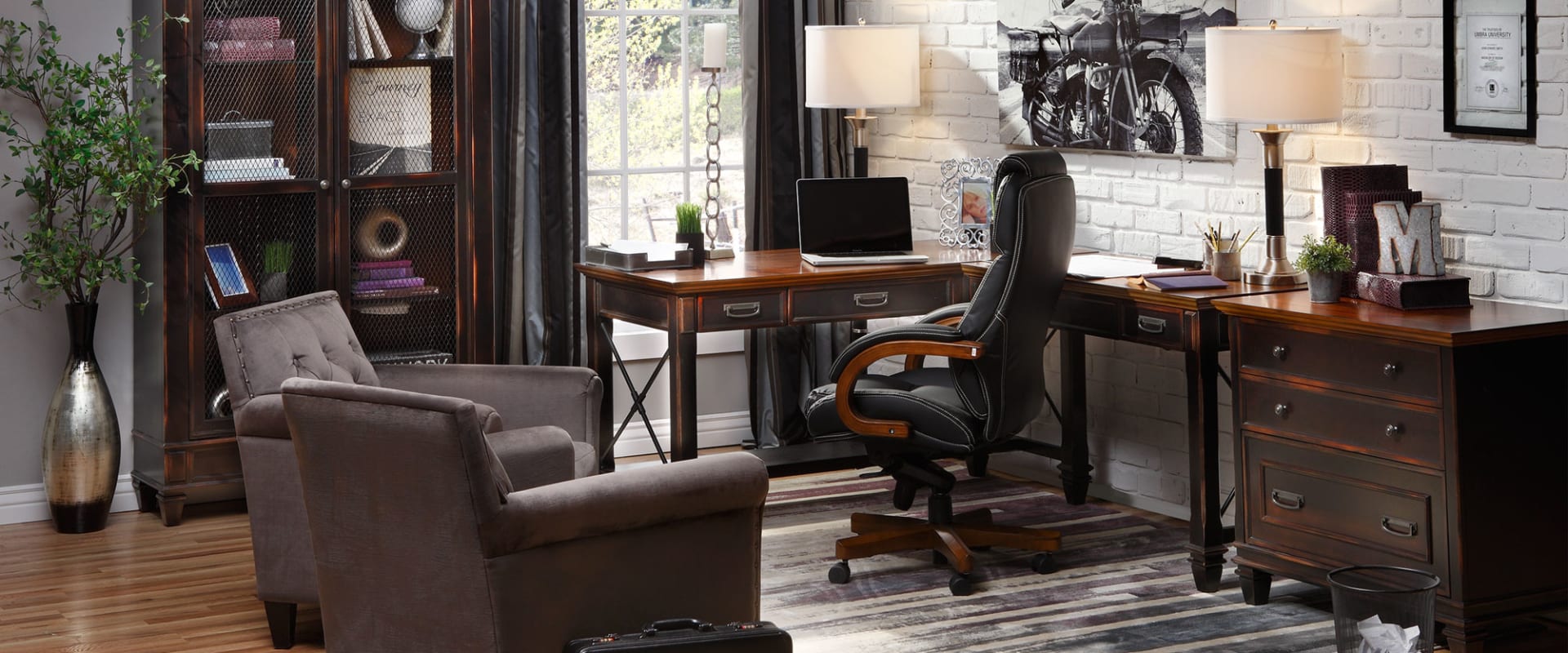How to Create a Home Office that Works for You!

For many of us, the home office has become an essential space, whether for remote work, managing personal tasks, or pursuing hobbies. A thoughtfully designed home office can significantly boost productivity and comfort while reflecting your unique personality and style. If you're ready to elevate your workspace, here’s how to create a home office that truly works for you.
A Designer's Perspective on Home Offices
As we discovered in our previous blog post, 4 Steps to Design the Perfect Entryway, it’s helpful to learn a bit more about how design experts approach styling a home office before we dive in ourselves.
Professional designers agree that the best home offices strike a balance between functionality, ergonomics, and aesthetics:
- Functionality: Ensure your office has everything you need to be productive, laid out in an organized manner.
- Ergonomics: Choose furniture that supports your posture, eyesight, and overall physical well-being.
- Aesthetics: Create a visually appealing space that inspires you to spend time there.
By prioritizing these three pillars, you can make informed decisions about your workspace design.

Featured above: the Sedona Writing Desk
Location Matters
The first step is to choose the right location—it sets the tone for your productivity and comfort. Look for a spot that minimizes distractions, offers privacy, and allows easy access to essentials like power outlets and Wi-Fi. Here’s what to consider:
- Natural Light: Opt for a space with ample sunlight to boost mood and energy levels, and reduce eye strain.
- Seclusion: Select an area away from high-traffic zones to minimize distractions.
- Space: Ensure there’s enough room for movement and all essential equipment. Even small spaces like hallways or corners can work with the right setup.
If natural light isn’t available, supplement with quality artificial lighting—more on that later!

Featured above: the Mountain Home Desk
Furnishing Your Space
Once you’ve chosen the location, it’s time to furnish your home office. Tailor the layout to your needs!

Desks
Your desk is the centerpiece of your workspace—it’s where ideas are born, tasks are tackled, and productivity thrives. Choosing the right one isn’t just about looks; it’s about finding a desk that fits your space, meets your needs, and supports your workflow.
- Size Matters: Measure your space and choose a desk that accommodates your computer, monitor(s), and supplies without overwhelming the room.
- Standing Desks: Consider adjustable desks if you want to alternate between sitting and standing.
- Storage Options: If you’re going paperless, opt for minimalist desks. Otherwise, look for desks with hutches or built-in organizers.
- Alternative Choices: Dining tables or wall-mounted desks can work beautifully in unconventional setups.
Expert advice: Stick to furniture styles that complement your home’s existing aesthetic for a cohesive look.

Featured above: the Whiskey River Writing Desk
Seating
Your office chair is as important as your desk—it’s the foundation of your comfort and productivity during long hours of work. A poorly chosen chair can lead to discomfort, health issues, and even reduced focus. Look for:
- Ergonomic Features: Adjustable height, lumbar support, and swivel functionality are key for comfort during long hours.
- Style Meets Functionality: Match your chair’s design with the desk and decor while ensuring it fits under the desk comfortably.
- Alternative Seating: Consider accent chairs or chaise lounges for creative breaks, or exercise balls to improve posture.
Storage Solutions
Think about the items you use every day—your laptop, pens, notepads, chargers, or even sticky notes. These are your must-haves that should stay

Featured above: the Hartford L-Shaped Desk
Additional Tips for Productivity
Maximizing the effectiveness of your home office goes beyond the setup—it’s about creating habits and boundaries that keep you focused and productive.
- Establishing a consistent work routine.
- Setting boundaries with family members or roommates during work hours.
- Keeping distractions (like TV or personal devices) out of the workspace.
Closing Thoughts
Designing a home office isn’t just about functionality—it’s about creating a space where you feel motivated and comfortable every day. With these tips in mind, you’re ready to transform any corner of your home into a productive haven.
Be sure to check out your local Furniture Row or our website to find your perfect home office pieces. Happy decorating!